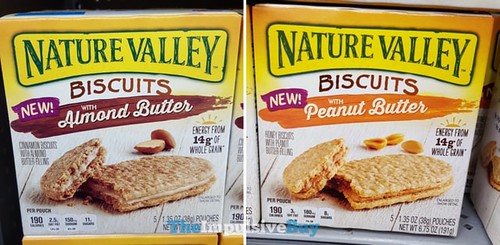Introduction
Natural flavors are a common ingredient in many of the foods and beverages we consume every day. But what exactly are they? Are they really as “natural” as food companies would like us to believe? Unfortunately, there is more than meets the eye when it comes to natural flavors. In this article, we will explore what natural flavors actually are and why their use has become so widespread in our food industry.
We will also discuss some of the potential risks associated with consuming products that contain natural flavors, including possible health concerns for sensitive individuals. By understanding what goes into making these flavorings and how they can affect us, we can make informed decisions about which foods to include in our diets.
The Regulatory Framework for Natural Flavors
The use of natural flavors in food production is subject to regulation by the US Food and Drug Administration (FDA). The FDA allows the use of undisclosed ingredients in natural flavors, with the exception of certain nature-identical flavoring substances. This is done to protect trade secrets and promote innovation in the food industry. The FDA also sets safety and quality regulations on natural flavors and their constituent ingredients to ensure that they are safe for consumption and free of harmful contaminants. However, this regulatory framework presents a potential tradeoff between transparency and trade secret protection in the food industry, as some natural flavors may contain undisclosed ingredients that could pose risks to sensitive individuals. As such, it’s important for consumers to stay informed and seek out additional information on the foods they consume.
The Misleading Nature of Natural Flavors

The term “natural flavors” can be very misleading for consumers, as it implies that all of the ingredients in their food are natural and safe, even if they are not explicitly labeled as such. However, natural flavors may actually refer to a broad range of artificial or synthetic chemicals that have been derived from plant or animal sources and manipulated in laboratories. While these ingredients may be derived from natural sources, they could still pose potential health risks over time. Some natural flavors may also contain undisclosed chemical components and other ingredients that are not listed on food labels, which has led some people to be concerned about potential long-term health and safety risks. The lack of transparency around natural flavors makes it difficult for consumers to fully understand what is in their food and the potential impacts on their health.
The Truth Behind Natural Flavors

Despite the FDA’s regulatory framework for natural flavors, there are still many lesser-known facts and risks associated with the use of these ingredients in food production. For example, some natural flavors may contain undisclosed ingredients that could pose risks to sensitive individuals, such as those with allergies or other health conditions. This lack of transparency can make it difficult for consumers to make informed decisions about the foods they consume. In addition, the production and processing of natural flavor ingredients can have negative environmental impacts, such as deforestation and habitat destruction. As such, it’s important for consumers to stay informed about the potential risks and benefits of natural flavors and to seek out additional information and advice as needed.
Moreover, some food companies may use marketing and labeling strategies to promote natural flavors as a healthier or more nutritious option, even if the health benefits of these flavors are not well supported by scientific evidence. This can lead to confusion and misunderstanding among consumers and may make it difficult for individuals to make informed decisions about the foods they consume. In some cases, food companies may use the term “natural flavors” as a marketing ploy to appeal to health-conscious consumers, even if the product itself is not particularly nutritious or healthy. As such, it’s important for consumers to carefully evaluate food products and marketing claims and to seek out additional information and advice as needed.
Conclusion
In conclusion, it is clear that natural flavors can be a complex and potentially misleading topic for consumers. While the FDA has put in place regulatory frameworks to ensure the safety and quality of these ingredients, there are still many unknowns when it comes to their potential impacts on health or environmental sustainability. Consumers should stay informed about the facts behind natural flavorings, seek out additional information as needed, and evaluate food products carefully before making purchasing decisions. With an understanding of how natural flavors may affect our diets and environment, we can make smarter choices when selecting foods that support both our individual health goals as well as broader sustainable practices.
If you’re interested in learning more about healthy eating and how it can help you achieve sustainable weight loss, be sure to check out the blog post below:
If you’re interested in living a healthy lifestyle and achieving your weight loss goals, my book A Programmer’s Design Patterns for Weight Loss offers 10 powerful design patterns to help you reach your desired outcomes. By following these patterns, you can make clean eating a sustainable part of your lifestyle and experience the many benefits that come with improved health and wellness. So if you’re ready to take control of your health and learn more about these design patterns, be sure to check out my book today!
For more information on health and wellness, be sure to check out our other articles and resources at https://weightlossdesignpatterns.com. We are committed to providing valuable information to help you make informed decisions about your health and well-being.

